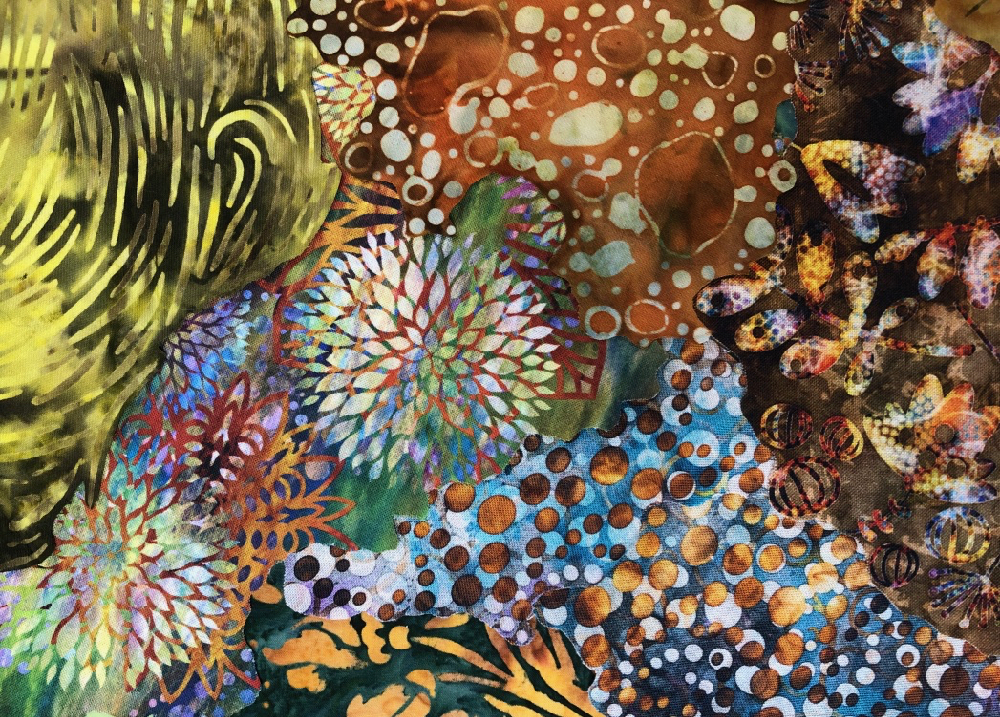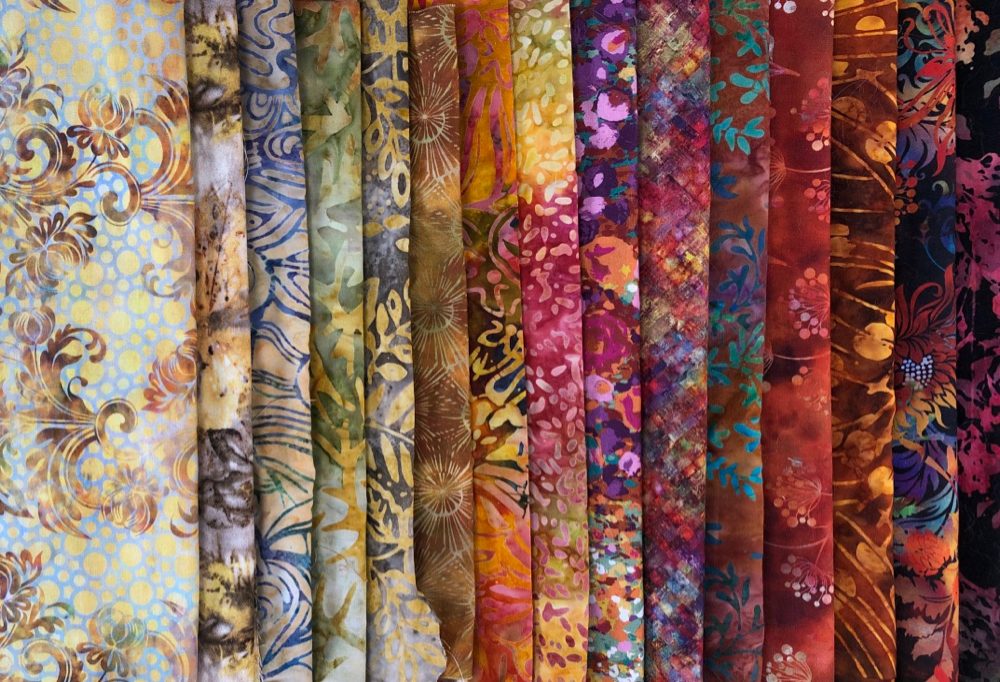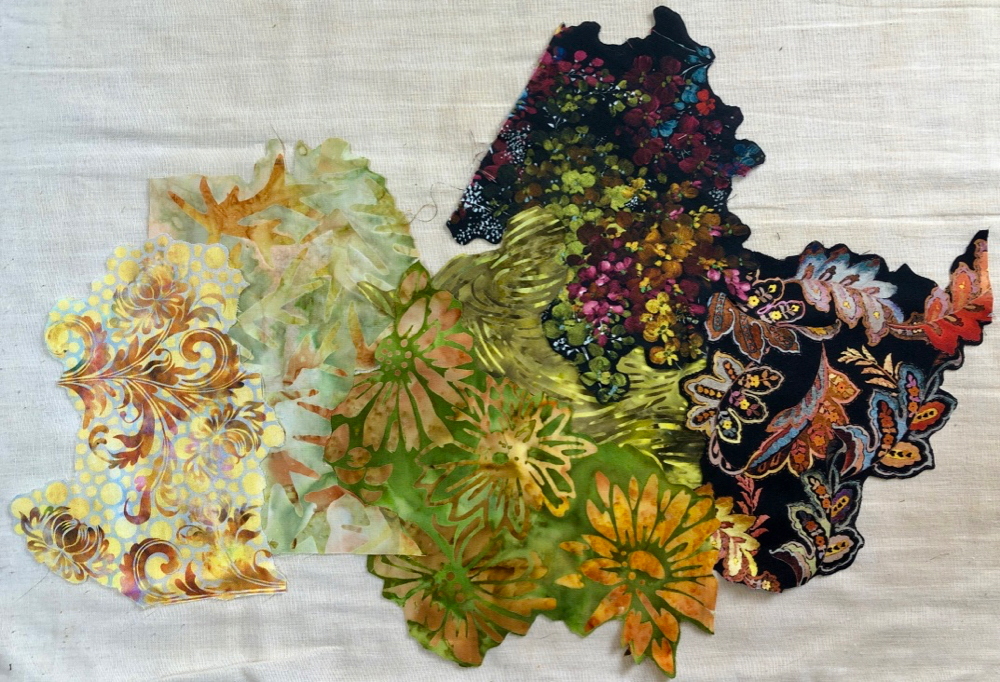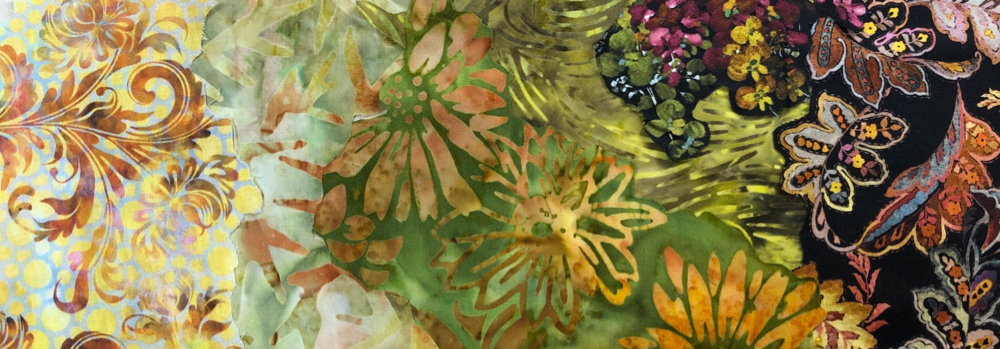In last week’s post, I talked about value in fabric colors—lightness and darkness—by converting all photos to a gray color scale. Specifically, photos of the fabrics I’ve chosen for my newest project, Sunshine Oma, the subject of my January Fly on the Wall: Studio Watch. Below is that fabric selection in color, detail photo above.
This week I’m showing you the fabric palette I created to begin working on that portrait. A palette is comprised of one irregular shape cut from each fabric. Creating my palette helps to focus my brain on the qualities of color and value as well as the prints, patterns, or designs of each fabric. I can use the various prints to my advantage for adding contours to my subject, and helping to blend from one fabric and value to the next, creating the illusion of form.
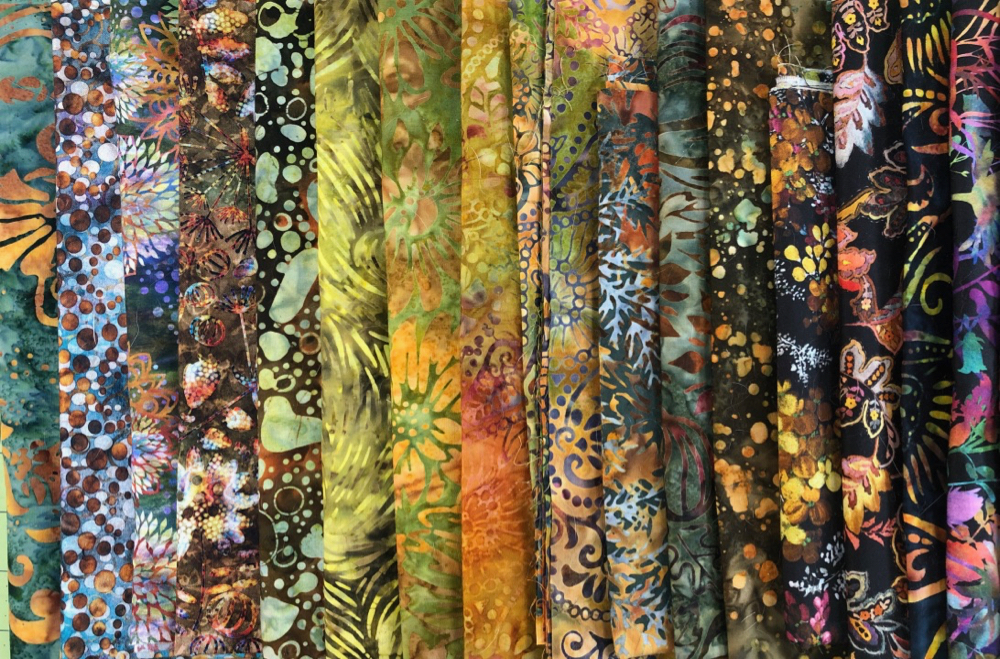
With my fabric palette to one side and my source photo to the other (as above), I’m ready to take the plunge and begin the collage. For any artistic endeavor, beginning is probably the most difficult task. But by the time I’ve handled and cut into the fabrics for the palette I plan to use, I’ve already accomplished one of the hardest parts—actually cutting into my beautiful, pristine fabric. But once that deed is done, I’m ready to put those newly cut shapes to use in the collage.
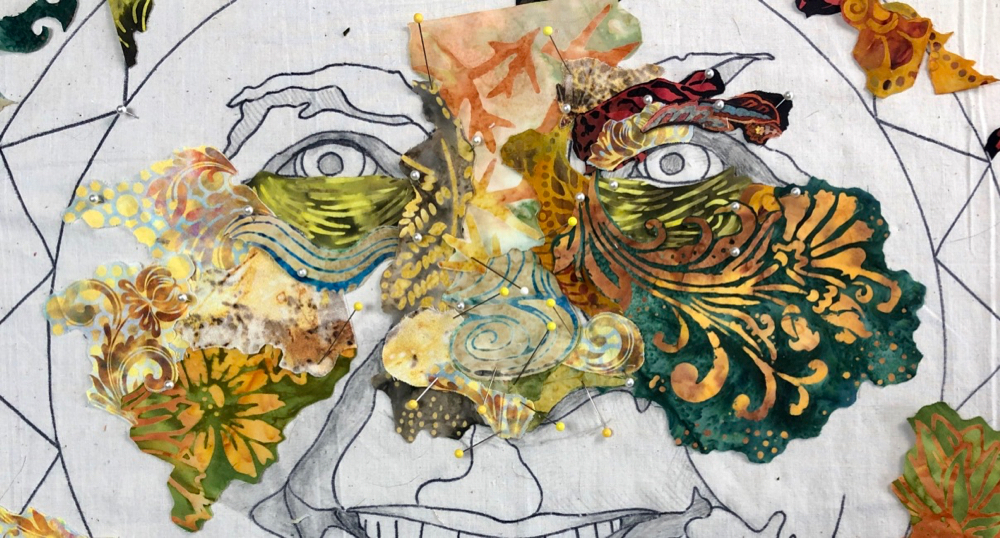
Above is the start I made on the portrait of my mom. It’s where I ended the first weekly session of Sunshine Oma. It was a start—only a beginning—that I added to and altered before the second week of Fly on the Wall. By having my pre-cut palette right next to me, I could search for and audition various fabrics quite readily both as I was preparing for the presentation and as I was later working live during the session.
And here’s a few examples below, of my newest palette. Pay special attention to how I’ve cut around and with the printed designs. These patterns in the fabrics will guide my choices as I work on the portrait, though really, this fabric palette could be applied to just about any subject.
And that’s another point about creating a palette, you don’t really know in the long run, if these fabrics are going to work for your subject or not. But you gotta start somewhere. If not for this subject, they’ll be ready for the next.
Notice that the prints in my fabrics also serve as a guide for cutting out the shapes for the palette. Cutting “irregular” and “unexpected” edges is what makes it possible to blend smoothly from one fabric to the next. Likewise—and though it may seem counterintuitive—I’ve found that the use of strong, organic-shaped prints, such as those in my palette, also make blending easier by connecting the “dots” of color and value and even prints, from one fabric to another. This is in comparison to using solids or small, regular patterns such as calico-like fabrics.
The fabric shapes cut out above, are overlapped below, as a bit of a test to see how well they blend and merge together.
Having a pre-thought and pre-cut palette works on so many levels as you immerse yourself into a fabric collage. For further reading, check out “Creating a Palette for Fabric Collage.” Read it. Try it. It’s fun.
Register for Fly on the Wall: Susan Carlson Studio Watch 2023
• January: Sunshine Oma
January 5, 12, 19, 26, 2023
$98
CLICK HERE TO REGISTER
Watch—and work along with me—as I create a collage portrait of my lovely mama (a.k.a. Oma) as a radiant sun face—to have ready for her 90th birthday at the end of January.
Each session is recorded so don’t worry if you miss something during the presentation or even miss the entire evening. You’ll be able to catch up with the recording.
For those who wish to try their hand at a sun portrait, in addition to the slideshow, demo, Q&A, and full recordings of the four presentations, registrants will also receive all of the following:
• A free PDF of my Sun Portrait pattern.
• Free access to the Thursday Night in My Studio Live! recorded presentation (see preview below) that explains how to adapt my Sun Face pattern to a photo of a particular person.
• And a $20 discount for a one-on-one coaching session scheduled for January or February 2023—in case you’re interested in specialized help with your own work-along creation.
